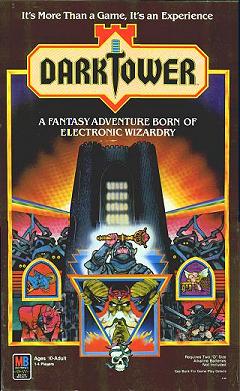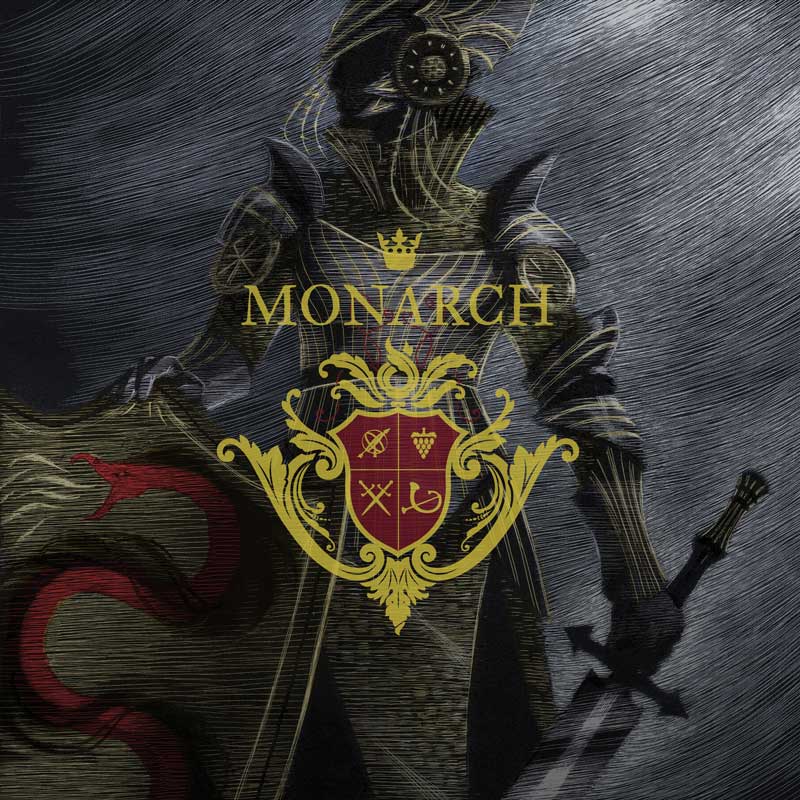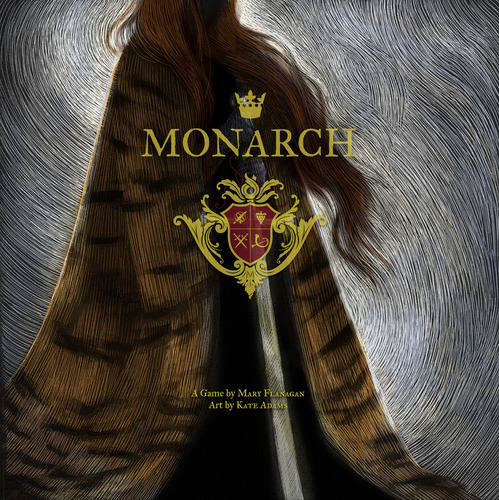As part of our November Spotlight on Monarch, we strive to inform the readers of little extra tidbits surrounding the game. Games are made by people, and one of those tidbits we enjoy is learning a little bit more about the people behind them. Some designers shy away from the public stage, while others enjoy being front and center. In the case of Monarch’s veteran game designer Mary Flanagan, she’s always excited to talk about her passion for gaming and her litany of efforts in the worlds of game theory and social growth. Between her design efforts and academic commitments, the trick is actually getting her to stop for long.
We did it though! It may have taken an initiation into the campus secret society and a treasure map of the Northeast, but we finally found Dr. Flanagan…we presume. From her classroom teachings on game design to experimentation within Dartmouth’s reputable Tiltfactor games lab – not to mention showing off a little game called Monarch – we tracked her down working on her latest efforts within (and for) the gaming world.
Well, and the…oh…see, we can’t tell you that. Secret society and all…
What we can talk about is Monarch, her latest publication and what brings us here today anyhow. In this game, the ruling queen is dying, and she intends to pass her throne off to one of her four daughters. As one of those daughters, it’s up to you to prove that you’re the most capable by generating as much prestige as you can through bringing a variety of assets to court. The catch in this tableau-building game is that you’re all competing for the throne without directly fighting your way up Murder Mountain. Succession in Monarch is determined by your skills in building up the kingdom rather than taking down your opponent.
We can’t promise your sisters won’t try something a few years down the line, but by then that’ll be your concern really.
To figure out how the game came to be and the impetus behind it, we figured it’d be best to go right to the source. Thankfully, Mary Flanagan is here to guide us through these turbulent times in the kingdom and maybe, just maybe, how we can gain the upper hand on our fellow sisters. Enjoy!
Round One Questions
CR: What was your Gateway Game?
I would have to say that Dark Tower in the 1980’s was the first game that I played using battle stats. It solidified my love of both digital games and board games! But I grew up playing all kinds of games, and I like to say that in the family, my grandmother was something of a card shark.
CR: What was the last game you really enjoyed playing (besides Monarch)?

Good choice!
I play a lot of games, digital and analog. I love the beauty of Sailor’s Dream, an app that is really a piece of electronic literature. I’ve been replaying Ace Attorney on my iPhone for kicks. I missed IndieCade this year, and this is where I encounter a lot of inventive digital games. In terms of cardboard…Netrunner? I’ve also been eager to play Codenames and Mysterium.
CR: How big is your game collection?
Pretty big. Games from my childhood are placed happily alongside digital games and the latest Euro strategy games. These sit alongside historic reproductions of Senet, Go, chess, Tafl, and the Royal Game of UR.
CR: What is your favorite type of game to play?
I can’t help the joy of engine building while playing digital Ascension. I try not to, but I am compelled, especially when traveling.
CR: How do you feel about Monopoly?
Monopoly has that interesting back story about being initially designed by Elizabeth Magie as a critical game in support of the single tax movement. Then, an entrepreneur took that game to Parker Brothers and repackaged it as Monopoly, and the rest is history. It’s not my favorite game to play, but it’s an entry for many people into gaming and thus it serves an important role.
On Monarch
CR: What was the inception behind Monarch?
 I’ve wanted to make a board game from a female viewpoint for quite a while. I’m interested in creating beautiful games that offer new experiences for players. In Monarch, the characters need to show they are strong leaders, and that they can use strategy well. Players are quick to jump into their roles in the future/past fantasy setting in the land of Minervia and build the best courts they can to prove their ability to rule. The currencies show that people have to be addressed before they are taxed, and that there are different ways to find value.
I’ve wanted to make a board game from a female viewpoint for quite a while. I’m interested in creating beautiful games that offer new experiences for players. In Monarch, the characters need to show they are strong leaders, and that they can use strategy well. Players are quick to jump into their roles in the future/past fantasy setting in the land of Minervia and build the best courts they can to prove their ability to rule. The currencies show that people have to be addressed before they are taxed, and that there are different ways to find value.
CR: Monarch is unique in that it offers a traditionally medieval flavor wherein all of the notable characters (both the Queen and players) are all female. Has there been any notable memories that came as a result of that fact, good, bad, or otherwise?
Interestingly, the most resistance to the game was from certain popular publishers, not from players. I’ve playtested it many, many times and shown the game at both Gen Con and Essen, and if anything it offers players a further sense of fun and whimsy in a serious strategy game. The gender aspect ends up being quite subtle, and most players seem ready to take it on. I’m proud that even hardcore gamers love the gameplay and find the theme charming while the gameplay is still surprisingly complex.
Because there are so few representations of female perspectives in board games (let alone digital games), the game is unique on many levels, from mechanics to the story. I’ve always wanted to create an alternative “princess” game that was not “pink” in any way. This game meets this goal. In fact, the word princess is never used in the game. You refer to the other players as ‘sisters.’
Oh, and while Monarch may feel medieval, it’s a fictional past/future type of medieval. It’s a different world with a few striking similarities, and we have some folktales from the world people might enjoy.
CR: The game is mechanically similar to many other tableau-style games, but it does do a few things differently. One of these the minor conflict over whether or to upgrade locations for shared player benefit. Was this always in the design?
Many aspects in the design changed at some point in time though testing. No, this came about as the characters needed to pursue their leadership path and show their leadership – and be rewarded for it – amongst the lands.
CR: Monarch also utilizes event cards that either help or hurt all players equally, often based on player decisions. What was the inspiration behind them?
 Another aspect of the game I love are these Moon cards, which prompt negotiation among the sisters about events of mutual benefit or mutual harm. There is a type of theory about “the commons” that emerges in the game. The gameplay focuses on group dynamics and the balance between competitive interests and cooperative elements of play. Sometimes issues of the commons, like today’s climate change, will really not offer a logical benefit at some point to any players. This is my way of bringing in some interesting ideas on game theory that I’ve been thinking about.
Another aspect of the game I love are these Moon cards, which prompt negotiation among the sisters about events of mutual benefit or mutual harm. There is a type of theory about “the commons” that emerges in the game. The gameplay focuses on group dynamics and the balance between competitive interests and cooperative elements of play. Sometimes issues of the commons, like today’s climate change, will really not offer a logical benefit at some point to any players. This is my way of bringing in some interesting ideas on game theory that I’ve been thinking about.
CR: As an academic in the ‘real world’, has Monarch made its way into your classroom yet?
My experiences a designer always come back to inform my teaching, and I’ve designed a lot of games at this point. I haven’t yet used Monarch specifically as a teaching tool, but the ethos in the development process and the design methodology certainly do.
CR: You also founded the Tiltfactor lab at Dartmouth College, which uses games to promote social growth. Can you give a few examples of some memorable games to come through it over the years?
I actually founded Tiltfactor before coming to Dartmouth, but I’ve been at Dartmouth quite a while now. Layoff, Massively Multiplayer Soba, Profit Seed, Pox: Save the People, Buffalo, Awkward Moment – I have many favorites for different reasons, and the list is long! Some games have addressed public health; others, social biases, stereotypes, and just “getting along” better. In all of the projects over the last 5 years, I’ve had a social science research team gathering data about what our games – and other people’s games – do.
At Tiltfactor, we’ve discovered some pretty revolutionary things. It still seems incredible to me that reskinning a virus spreading board game with a zombie theme increases its effectiveness in public health. (We have a research paper published with these compelling results!) It seems kind of amazing that in this digital age, board games can be more effective for teaching that digital games. And that a simple card game can lower biases – woe. Every day, I’m ready to be shocked at what we discover. It’s not always intuitive, and it’s not always obvious. Experimental research has taught me to be a very humble designer, because with social psychology studies on games, you really get to understand players, and it’s not always what you think.
Working on an eclectic team is very invigorating. Tiltfactor.org rocks!
CR: Although you’ve had your hands in many games, Monarch was the first to visit Kickstarter. What was it about this game that made you take that leap?
Monarch is the kind of game that fits a wider gamer audience in tone, look, and mechanic. The game works well for ages 12 and up, so it appeals to a pretty wide demographic. Couples play is just as much as families do. Only about 7% of games Kickstarted are by women designers, though there are many more of them out there. I loved running the Kickstarter, though it was a lot of work. I’ve never met so many players before the release of a game. They actually influenced the game, and if you see the Unwanted Guests category, they are in the game too!
CR: Lastly, would you instill a bloodless coup to take the monarch’s throne? We’re not saying you would, but, you know, hypothetically…
You are possibly foreshadowing the game series trajectory…Monarch is the first of a trilogy! So…just wait and see!
While many games (and history books) tend to focus on the role of kings when they deal with royality, many queens have made an indelible mark upon the world stage at one point or another. Our own history proves that powerful royalty bears no allegiance to gender. This is part of what Monarch subtly explores. And we thought…why not help out to that end? Whether from real accounts or notable representations throughout literature, stage, and screen, powerful matriarchs are not as rare as some mediums make it out to be. To that end, we’re going to hold court with many of these illustrious royals. You’re invited, of course, and we’re raffling off a copy of the game to anyone who can identify some of the invitees!
Photo Credits: Monarch cover and artwork by Kate Adams.



